#skin elastin
Text
0 notes
Text

What You Need to Know About Skin Care After Sun Exposure
Sun exposure can have both positive and negative effects on your skin. On one hand, it can provide vitamin D, boost your mood, and enhance your appearance. On the other hand, it can also cause sunburn, premature aging, and skin cancer. Therefore, it is important to know how to protect your skin from the sun and how to take care of it after sun exposure.
How to Protect Your Skin from the Sun
The best way to protect your skin from the sun is to avoid excessive sun exposure, especially between 10 a.m. and 4 p.m., when the sun's rays are the strongest. However, if you have to go outside during these hours, you should follow these tips:
- Wear sunscreen with at least SPF 30 and broad-spectrum protection, which can block both UVA and UVB rays. UVA rays can penetrate deeper into the skin and cause wrinkles, sagging, and dark spots. UVB rays can damage the surface of the skin and cause sunburn and skin cancer. You should apply sunscreen 15 to 30 minutes before going outside and reapply every two hours or after sweating or swimming.
- Wear protective clothing, such as long-sleeved shirts, pants, hats, and sunglasses. You can also look for clothes with UPF (ultraviolet protection factor), which can indicate how much UV radiation can pass through the fabric. The higher the UPF, the better the protection. For example, a shirt with UPF 50 can block 98% of UV rays.
- Seek shade whenever possible, such as under trees, umbrellas, or awnings. However, keep in mind that shade does not provide complete protection, as UV rays can still reflect from the ground, water, or sand. Therefore, you should still wear sunscreen and clothing even if you are in the shade.
- Avoid artificial tanning, such as tanning beds, lamps, or booths. These devices can emit UV rays that are even more intense than the sun and can increase your risk of skin cancer and aging. If you want to have a tan, you can opt for safer alternatives, such as self-tanning products or spray tans.
How to Take Care of Your Skin After Sun Exposure
Even if you follow the above tips, you may still experience some degree of sun damage after being outside. This is because the sun can affect your skin in various ways, such as:
- Dehydrating your skin, which can make it dry, flaky, and tight. This can also impair your skin's barrier function, which can make it more vulnerable to infections and irritants.
- Inflaming your skin, which can cause redness, swelling, pain, and itching. This can also trigger the production of free radicals, which are unstable molecules that can damage your skin cells and DNA.
- Pigmenting your skin, which can cause tanning, freckles, or dark spots. This is a result of your skin producing more melanin, which is a pigment that can protect your skin from further sun damage. However, too much melanin can also cause uneven skin tone and hyperpigmentation.
- Aging your skin, which can cause wrinkles, sagging, and loss of elasticity. This is a result of your skin breaking down collagen and elastin, which are the proteins that give your skin its structure and firmness.
To minimize these effects and help your skin recover after sun exposure, you should follow these tips:
- Wash your skin gently with a mild cleanser and lukewarm water. This can help remove any dirt, sweat, or sunscreen residue from your skin and prevent clogged pores and breakouts. Avoid using harsh soaps, scrubs, or hot water, as they can irritate your skin and strip away its natural oils.
- Moisturize your skin generously with a hydrating lotion or cream. This can help replenish the moisture that your skin lost from the sun and restore its barrier function. Look for moisturizers that contain soothing and healing ingredients, such as aloe vera, chamomile, oatmeal, or green tea. Avoid moisturizers that contain alcohol, fragrance, or retinoids, as they can dry out or sensitize your skin.
- Cool your skin with a cold compress, ice pack, or damp cloth. This can help reduce the inflammation, pain, and itching that your skin may experience after sun exposure. You can also use products that contain cooling and anti-inflammatory ingredients, such as menthol, cucumber, or calamine. Avoid applying ice directly to your skin, as it can cause frostbite or damage your blood vessels.
- Treat your skin with products that can repair the sun damage and prevent further harm. For example, you can use products that contain antioxidants, such as vitamin C, vitamin E, or niacinamide, which can neutralize the free radicals and brighten your skin tone. You can also use products that contain ingredients that can stimulate collagen and elastin production, such as peptides, growth factors, or retinol. However, be careful with using products that can make your skin more sensitive to the sun, such as alpha hydroxy acids, beta hydroxy acids, or benzoyl peroxide. You should use them at night and always wear sunscreen during the day.
- Hydrate your body internally by drinking plenty of water and fluids. This can help replenish the water that your body lost from sweating and prevent dehydration, which can affect your skin and overall health. You can also eat foods that are rich in water, such as fruits, vegetables, soups, or smoothies. Avoid drinking alcohol, caffeine, or sugary drinks, as they can dehydrate your body and worsen your skin condition.
Conclusion
Sun exposure can have both positive and negative effects on your skin, depending on how much and how often you expose yourself to it. To protect your skin from the sun and take care of it after sun exposure, you should follow the tips mentioned above and consult your dermatologist if you have any concerns or questions. By doing so, you can enjoy the benefits of the sun while minimizing its risks and keeping your skin healthy and beautiful.
#sun exposure#skin care#sun protection#sunburn#hydration#inflammation#pigmentation#aging#antioxidants#collagen#elastin
2 notes
·
View notes
Note
have you heard of “blue light skincare” apparently it’s supposed prevent any type of damage caused by screens? do you think that’s another gimmick or legit🫣
it is 100000% a gimmick😭 there’s nothing unique about the formulas or the products themselves that set them apart from anything that already exists
I got to use two brands that claimed to “reverse/prevent damage caused by tech, screens etc,” but it’s nothing special lol. plus the so called damage is practically nonexistent, we should be more concerned with how our eyes are affected tbh
#answered#even if it DID affect our skin the way they say it did you’re better off finding products that aid in collagen & elastin production#also sunscreen!! like ‘blue light’ is nothing compared to the actual sun like cmon girl#I hate when people try to sensationalize very small things it’s bad enough we obsess over fake issues regarding our hair skin body etc#let’s not add to it!! love and (blue) light!!🤭💙 made myself giggle#im so grateful for my chem beloveds I send them all my skincare or whatever I’m thinking of buying and just wait for their approval😭
2 notes
·
View notes
Text
A lot of younger people have no idea what aging actually looks and feels like, and the reasons behind it. That ignorance is so dangerous. If you don’t want to “be old,” you aren’t talking about a number of years. I have patients in their late 80s who could still handily beat me in a race—one couple still runs marathons together, in their late 80s—and I lost someone who was in her early 60s to COPD last year. What you want is not youth, it is health.
If you want to still be able to enjoy doing things in your 60s and 70s and 80s and even 90s, what you want to do, right now, is quit smoking, get some activity on a regular basis (a couple of walks a week is WAY better for you than nothing; increasing from 1 hour a day of cardio to 1.5 will buy you very little), and eat some plants. That’s it. No magic to it. No secret weird tricks. Don’t poison yourself, move around so your body doesn’t forget how, and eat plants.
If you have trouble moving around now because of mobility limitations, bad news: you still need to move around, not because it’s immoral not to, but because that’s still the best advice we have. I highly recommend looking up the Sit and Be Fit series; it is freely available and has exercises that can be done in a chair, which are suitable for people with limited mobility or poor balance. POTS sufferers, I’m looking at you.
If you have trouble eating plants because of dietary issues (they cause gas, etc.) or just because they’re bitter (super taster with texture issues here!), bad news. You still want to find a way to get some plants into your body on a regular basis. I know. It sucks. The only way I can do it is restaurants—they can make salads taste like food. I can also tolerate some bagged salads. On bad weeks, the OCD with contamination focus gets so bad I just can’t. However, canned beans always seem “safe,” and they taste a bit like candy, so they’re a good fallback.
If you smoke and you have tried quitting a million times and you’re just not ready to, bad news. You still need to quit. Your body needs you to try and keep trying. Your brain needs it, too. Damaging small blood vessels racks up cumulative damage over time that your body can start trying to reverse as soon as you quit. I know it’s insanely, absurdly addictive. You still need to.
You cannot rules lawyer your way past your body’s basic needs. It needs food, sleep, activity, and the absence of poison. Those are both small things and big asks. You cannot sustain a routine based on punishment, so don’t punish your body. Find ways to include these things that are enjoyable and rewarding instead. Experiment. There is no reason not to experiment—you don’t have to know instantly what’s going to work for you and what won’t, you just need to be willing to try things and make changes when things aren’t working for you.
You will still age. Your body will stop making collagen and elastin. Tissues you can see and tissues you can’t see will both sag. Cushioning tissues under your skin will get thinner. You’ll bruise more easily. Skin will tear more easily. Accumulated sun damage will start to show more and more. Joints will begin to show arthritis. Tendons and ligaments will get weaker and get injured more easily, as will muscles. Bones will lose mass and get easier to break. You’ll get tired more easily.
But you know what makes the difference between being dead, or as good as, in your 60s vs your 90s? Activity, plants, and quitting smoking. And don’t do meth. Saw a 58-year-old guy this week who is going to have a heart attack if he doesn’t quit whatever stimulant he’s on. I pretended to believe it was just the cigarettes, and maybe it is, but meth and cocaine will kill you quicker. Stop poisoning yourself.
Baby steps; take it one step at a time; you don’t need to have everything figured out right now. But you do need to be working on figuring things out.
18K notes
·
View notes
Text
Say Good Bye TO Dark CIRCLES:
Say Good Bye TO Dark CIRCLES: https://www.digistore24.com/redir/474960/sairahab33/
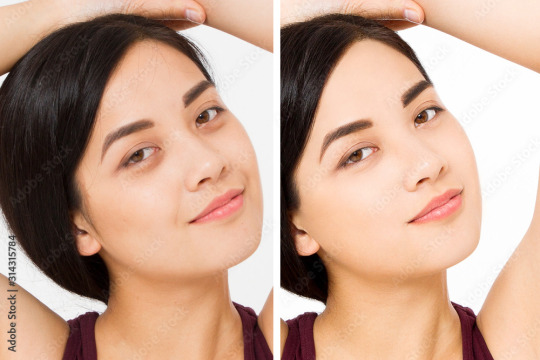
Say Good Bye TO Dark CIRCLES: https://www.digistore24.com/redir/474960/sairahab33/
#Dark Circles Eliminator#Under-eye bags#Dark spots around eyes#Eye cream#Skincare serum#Skin discoloration#Fine lines#Wrinkles#Hydration#Collagen boost#Elastin boost#Skin rejuvenation#Youthful appearance#Skin hydration#Skin texture#Exfoliation#Radiance#Even skin tone#Puffiness#Before and after transformation.
0 notes
Text
Tighten Loose Skin at 40: Here's How!
Are you noticing a few more wrinkles and lines than you’d like when you look in the mirror? Are you starting to feel like gravity is working against you, pulling your skin downward? If you’re in your 40s and dealing with saggy face skin, you’re not alone. Many people experience changes in their skin as they age, and it’s completely natural. But that doesn’t mean you have to live with it! In this…
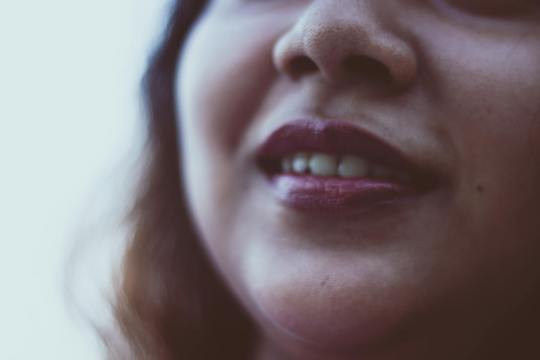
View On WordPress
#40s skincare#beauty#collagen#elastin#face saggy#glow#millennial#saggy skin#skin#skincare#sun damage#wellness
0 notes
Text
what is skin collagen?
Collagen is a fibrous protein that serves as a fundamental building block for various connective tissues in the body, including the skin. It is the most abundant protein in mammals, constituting a significant portion of the extracellular matrix, which provides structural support to cells.
In the skin, collagen plays a crucial role in maintaining its strength, elasticity, and firmness. The…
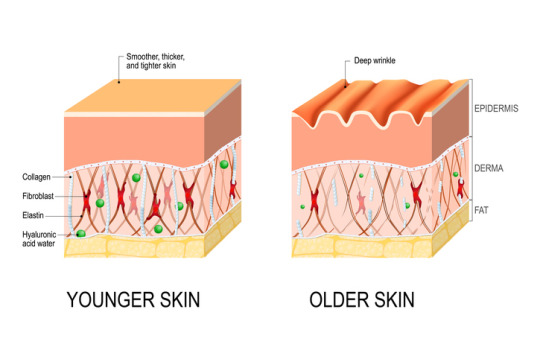
View On WordPress
0 notes
Text
#bibakart#moisturizer#radiance cream#skin protective cream#body lotion#anti age night cream#intensive moisturizer#elastin day cream#renovating night cream#anti wrinkles repairing cream#restorative body cream#anti aging skin care#deep moisture body lotion#egg cream hydration mask#tropic day cream#hydro boost overnight gel mask
0 notes
Text
Red Light Therapy
Here’s everything you need to know about this super popular anti-aging treatment, now offered during cosmetic acupuncture sessions
The Benefits:
Anti-aging (via collagen and elastin)
Hair growth (scalp)
Reduces acute pain
Better sleep (melatonin production)
Increased blood flow (dilates vessels, and new vessel formation, more oxygen reaching cells)
Wound & injury healing (think fractures,…

View On WordPress
#acne scars#antiaging#Cambridge#collagen#elastin#Health#Natural Health#red light#red light therapy#skin treatments
0 notes
Text
Skin is Your Largest Organ - There's More to Good Skin Care Than Beauty
Skin is Your Largest Organ – There’s More to Good Skin Care Than Beauty
Your skin is the human body’s largest organ. It is part of the integumentary system acting as a physical barrier to the rest of the organs that make up the person of you. Your integumentary system consists of your skin, hair, nails, and glands. These organs and structures are your first line of defense against bacteria and to protect you from injury and sunlight. This body system works in…
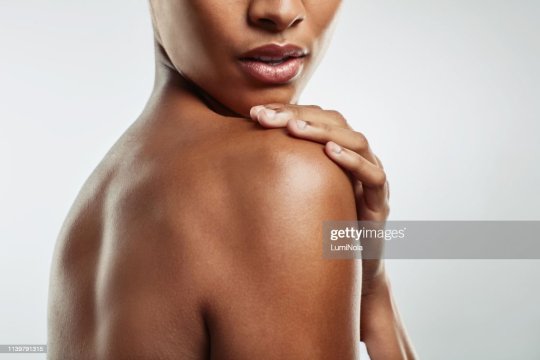
View On WordPress
#calcium#cell repair#clean#cleanliness#Collagen#cosmetics#dermis#elasticity#Elastin#epidermis#head#health#knees#Melaleuca#renew#Sei Bella#shoulders#skin#skin care#skin health#stratum Corneum#therapy#toes#Vitamin A#Vitamin C#Vitamin D#Vitamin E#vitamins
1 note
·
View note
Text
Very tired of hearing how women think their weak and how men are biologically better when is is actually not true at all so here's why women are stronger, I'll put medical and scientific facts about women
1. Women have stronger Immune system
Females have better innate and adaptive immune responses to disease-causing pathogens than males. Females also produce better protective antibodies following vaccination against flu, yellow fever, dengue, and viral infections.
Females typically develop higher innate, humoral and cellular immune responses to viral infections and in response to vaccine
Women see more colors than men
Even when compared to males who have not been diagnosed with color blindness, women seem to be able to distinguish between colors more easily than men. This allows women to more accurately identify the color of an object that may be between two similar hues, like blue and green.
Women have better night vision
However, studies have suggested that there may be slight differences in night vision between men and women. One study published in the journal Ophthalmic and Physiological Optics found that women had better visual acuity in low-light conditions than men.
Women have better muscle endurance
While men usually have the upper-hand when it comes to strength, it may be surprising to many that women may actually have better muscle endurance than men do. Research has shown that in stamina-related exercises, women were able to exercise for about 75% longer than men could. It is suggested that the presence of estrogen in women makes their muscles more resistant to fatigue, and that women have more efficient metabolism within their muscles as compared to men.
Their bodies are structurally made for greater flexibility
When it comes to stretching and flexibility, women have an advantage in several ways.Firstly, their female muscles and tendons contain more elastin, the protein which gives our muscles, organs and skin the ability to stretch, and this gives them greater flexibility on the whole.
Women have higher levels of estrogen in their bodies, leading to wider hips that allow greater movement and flexibility in the pelvic region
Women are way more agile
Women on the other hand have greater agility.This is partly explained by the fact they are smaller and have a lower centre of mass thus are able to change direction and move quicker than their male counterparts. In addition balance is better for the same reason.
Women have stronger legs/lower body
In lower body absolute strength, a woman is 75% as strong as a man. This difference is usually attributed to the similar daily usage of legs between men and women. Both walk and use our lower body muscles about the same. This is not the case in daily activities using upper body strength.
Women have higher survival rate than men
Analysis of three centuries of historical data showed women are more likely than men to survive famines and epidemics. Their advantage is earned early. Female newborns were more likely to survive trying circumstances during the last three centuries. women has fundamental biological underpinnings is supported by the fact that even under these very harsh conditions, women survive better than men, and this starts at a very young age.
Women are more resilient
Several studies show that women score higher on the resilience scale than men. A study found that women outlived men during severe famines and epidemics. This survival advantage was found to be modulated by an interaction of biological, environmental and social factors.
They have better chances of surviving traumatic injuries
Another likely reason for women's longer life expectancy could be the fact that they have higher chances of surviving injury and trauma. Researchers, in studying data on patients who arrived at hospitals with traumatic injuries, found that women in the age range of 13 – 64 were significantly more likely to survive. Again, the key to this advantage may lie in the higher levels of female sex hormones in women, which may have an enhancing effect on the immune system.
Women have better memory
Remembering the faces of people you have just met may be a challenge for many, but it may be apparently less so for women in general. Women have been found to be stronger in memory skills than men, as suggested in studies where they outdid men in memory tests. Their superior memory skills are not just limited to remembering things, like items on a list, but also faces of people as well. Other studies have found that women can remember faces better than men, as they unconsciously spend more time studying features of new faces.
182 notes
·
View notes
Text
Wound Care
Ok so, take this with a BIG grain of salt, because I may be a medical doctor BUT you need to know how much wound care training we get in medical school: none. Zip. Zilch. There may be medical schools where you do, but mine wasn't a bozo factory and there was NO wound care training. Everything I know I learned from one of several sources: an intensive 2-day wound care course I did in residency (highly recommend), the local Home Health wound care nurse (highly recommend), a completely batshit insane old white male doctor who started our learning sessions by yelling Vietnam War stories at me (do not recommend), a hospital wound care nurse (highly recommend), and experience (oh god do not recommend).
The first thing you need to know is that wound healing varies dramatically across the course of a lifespan. Kids? Kids will heal. If they don't, get their ass to a pediatrician because there's something genetic going on. Young adults will heal. Middle-aged adults will heal. You know who doesn't heal for shit? The elderly, and people with severe illnesses, and people with uncontrolled type II diabetes.
Your body needs several things in order to heal. It needs macronutrients, so you need to be able to EAT protein, fat, and carbs. If you are on total parenteral nutrition, aka TPN, aka IV nutrition, you are going to be worse at healing. If you are starving yourself, you are going to be worse at healing. If your body is desperately funneling all the calories you take in to surviving your COPD or cancer, you are going to be worse at healing.
It also needs micronutrients. If your diet sucks, you won't heal. Take a multivitamin once in a while.
There are two CRITICAL skin components to healing: collagen and elastin. Guess what we stop making as we age. Promoting collagen isn't just good for "anti-aging," it's good for NOT ripping your skin apart. Taking oral collagen is probably bullshit because your body is going to have to disassemble it to get it across the intestinal membranes to absorb, but it's also harmless, and if your diet REALLY sucks, who knows. Give it a try. Collagen is made of amino acids; think protein.
Another absolutely crucial component is blood flow. As people age, they start to develop cholesterol plaques lining arteries that eventually pick up calcium deposits. This makes blood vessels less elastic, which is a problem, but eventually also blocks them off, which is a much bigger problem. If someone has the major blood flow to their feet decreased by 90% by arterial stenosis, they are not going to heal for shit AND their foot's gonna hurt.
One component of blood flow I hadn't thought about before going into medicine is fluid retention. The way your body works, blood exits the heart at a very high velocity, but slows to a crawl by the time it gets into capillaries, the smallest blood vessels in the body. Water is a very small molecule and can leave the blood vessel, especially if there aren't big, negatively-charged molecules like proteins like albumin in the blood vessels to hold the water there. And we're built for this--some water is supposed to leak out of our blood vessels when it gets to real little vessels. It gets taken back up by the lymphatic system and eventually dumped back into the bloodstream at the inferior vena cava. But if you aren't making albumin--for instance, in liver failure--you may leak a LOT of fluid into the tissue, so much that your legs get swollen, tight, the skin feeling woody and strange. This isn't fixable by drainage because the fluid is everywhere, not in a single pocket we can drain. And because it puts so much pressure on the tissues of the skin, it often results in ulcers. Congestive heart failure, liver failure, kidney failure--these are all common causes of severe edema, aka swelling due to fluid in the tissues. And they're a real bitch when it comes to wound care, because we have such limited resources for getting the fluid back out, which is a necessary first step to healing.
Pressure is another common cause of wounds. Pressure forces blood out of those little capillaries, so you starve the cells normally fed by those capillaries, and they die. It's called pressure necrosis. Very sick people who can't turn themselves over--people in the ICU, people in nursing homes--are especially prone to these wounds, as are people with limited sensation; pressure wounds are common in wheelchair users who have lost some feeling in the parts of their bodies that rub against those surfaces, or diabetics who don't notice a rock in their shoe.
So, if you're trying to treat wounds, the questions to ask are these:
Why did this wound happen?
-Was it pressure? If it's pressure, you have to offload the source of the pressure or else that wound will not heal. End of story. You can put the tears of a unicorn on that thing, if you don't offload the pressure it won't heal.
-Was it fluid? If it's fluid, you have get the fluid out of the issues or else it won't heal. You can sometimes do that with diuretics, medications that cause the body to dump water through the kidneys, but that's always threading a needle because you have to get someone to a state where they still have juuuuust enough fluid inside their blood vessels to keep their organs happy, while maintaining a very slight state of dehydration so the blood vessels suck water back in from the tissues. You can use compression stockings to squeeze fluid back into the vessels, but if they have arterial insufficiency and not just venous insufficiency, you can accidentally then cause pressure injury. The safest option is using gravity: prop the feet up above the level of the heart, wherever the heart is at, at that moment, and gravity will pull fluid back down out of the legs. Super boring though. Patients hate it. Not as much as they hate compression stockings.
-Was it a skin tear because the skin is very fragile? This is extremely common in the elderly, because they're not making collagen and elastin, necessary to repairing skin. If this is the case, make sure they're actually getting enough nutrition--as people get into their 80s and 90s, their appetites often change and diminish, especially if they're struggling with dementia. And think about just wrapping them in bubble wrap. Remove things with sharp edges from their environments. I have seen the WORST skin tears from solid wood or metal furniture with sharp edges. Get rid of throw rugs and other tripping hazards. I had somebody last week who tried to a clear a baby gate and damn near destroyed their artificial hip.
The next critical question: why isn't it healing?
-Are you getting enough nutrients? Both macro and micro?
-Are you elderly?
-Are you ill?
-Do you have a genetic disorder of collagen formation?
Fix why it's not healing and almost anything will heal. If you're diabetic, find a medication regimen that improves your sugars and stick to it. If you're anorexic, get treatment for your eating disorder. If you have congestive heart failure, work with your doctor on your fluid balance. Wear the damn pressure stockings. Prop up your feet.
If, after those two unskippable questions are done, you want to do something to the wound--apply a dressing, do a treatment--that's a whole other kettle of fish. I'll write that later. The dryer just sang me its little song and I need to put away the laundry.
668 notes
·
View notes
Text
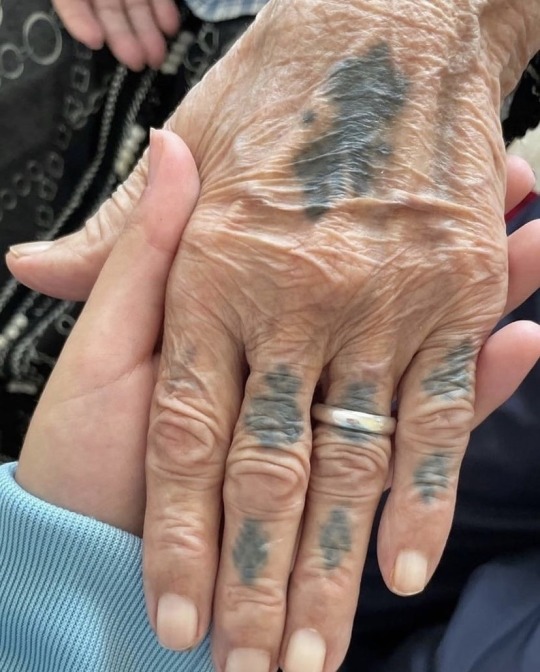

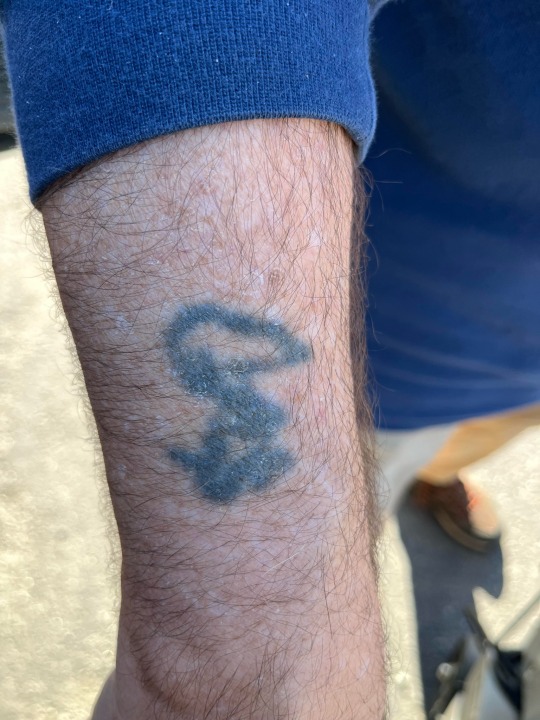
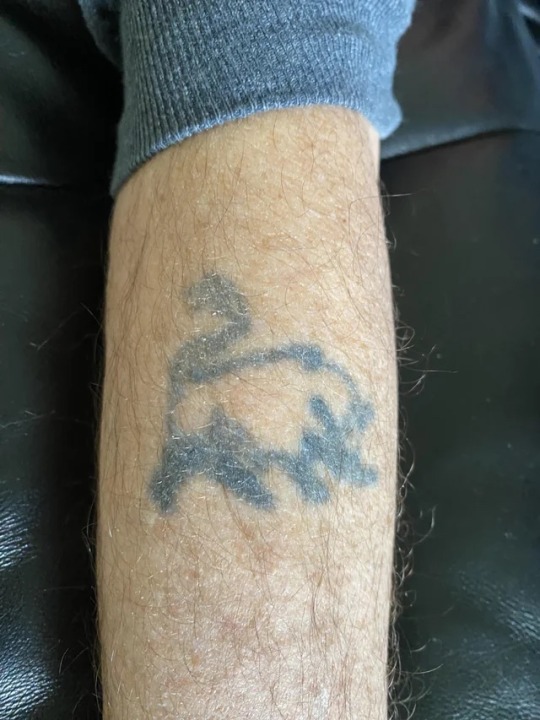
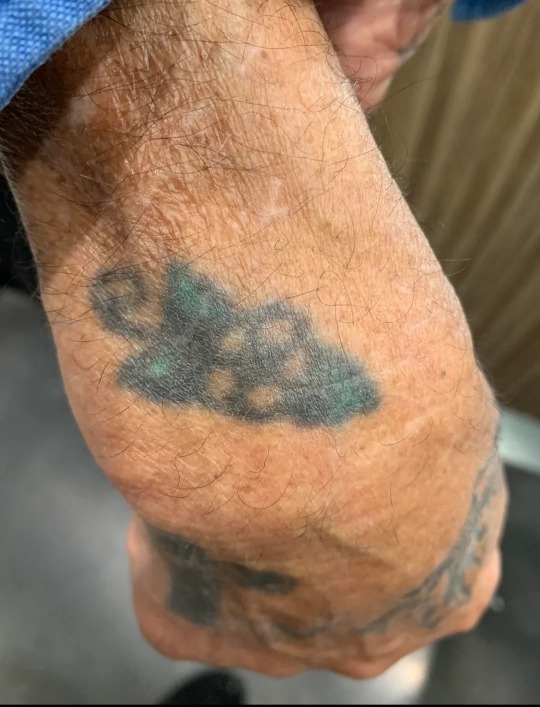
As skin ages, it naturally loses collagen and elastin, which can cause tattoos to fade. Cells from your immune system called macrophages will gradually absorb the tattoo ink and disperse it.
#interesting#interesting facts#discover#thats interesting#thats incredible#thats insane#like woah#tattoo#tattoos#fade#faded#skin#age#aging#what the fuck#what the hell#what the heck#what then#what the flip#what the shit#what the freak#what the#woah#woahhhh#woah :0#woah dude#but woah#woah woah woah#woahg#woah who said that
10 notes
·
View notes
Text
#Dark Circles Eliminator#Under-eye bags#Dark spots around eyes#Eye cream#Skincare serum#Skin discoloration#Fine lines#Wrinkles#Hydration#Collagen boost#Elastin boost#Skin rejuvenation#Youthful appearance#Skin hydration#Skin texture#Exfoliation#Radiance#Even skin tone#Puffiness#Before and after transformation.
0 notes
Text
JASMINE NWA - Este o lotiune de ingijire coporala antirid, pe baza de colagen, ce detine toate caracteristicile cosmeticelor antirid luxuriante, contribuind la incetinirea imbatranirii celulare. Ofera proprietati intense de catifelare si hidratare, bogata in complexe forte de aminoacizi, lipozomi, vitamine, antioxidanti, regleaza productia glandelor sebacee, reface bariera naturala de protectie a pielii. Personalizarea sa se face in functie de tipul de ten si poate include si acel look fabulos specific cremelor cu sclipici (SILVER, GOLD BRONZ sau alte culori). Ofera confort si calmare chiar in cazul pielii atopice, iritate, cum ar fi dupa epilat sau in cazul arsurilor superficiale, avand si efecte antialergene, septice si analgezice. Dupa aplicare, se absoarbe imediat, nu lasa urme grase, ne rada senzatia de bine, insotita de relaxarea musculara.
Jasmin Nwa are efecte minunate ce te fac pur si simplu sa il adori, oferind corpului un parfum feminin seducator cu note orientale diafane, o piele hidratata, fina, neteda si catifelata, pe o perioada indelungata.
#lotiunepentrucorp #laptedecorp #laptehidratant #laptecatifelant #parfumantcorp #cremadecorp #laptedecorp #cusclipici #gold #bronze #crema #cremacalmanta #emoliere #ingrijirecorporala #ingrijireapielii #rutinacorporal #cosmetics #2024 #hidratarepiele #pielegrasa #pieleuscata #laptevitaminizant #hidratare #antirid #dus #sala #sauna #baie #beautytreatmentathome #Körpermilch #kollagen #hydratation #hydratationcorps #hydratationprofonde #hauter #epilation #glitzercreme #healthy #perfectskin #falten #cremacusclipici #sclipicilaputere✨ #sclipici #funkeln #korper #bodyglitter #bodyglitters #bodyglittermilk
#cosmetics#natural#perfect body#body lotion#body care#body milk#anti wrinkle body milk#tech neck wrinkles#collagen beauty#booster elastin#booster collagen#perfect skin#glitter bodymilk#body glitter
0 notes
Text
I've had this idea rattling around for a while about a species of human-lookalikes that can pass as regular people but are physiologically so different they are a completely separate species.
They have lungs, a heart, kidneys, almost everything except their digestive system. They have no intestines, only a single extra-large stomach. Nutrients are absorbed directly through folds in the stomach lining, and the acid inside is powerful enough to corrode some metals, allowing very few items to escape digestion. Predators with extra-strong stomachs have been known to snatch construction and industrial workers right off the ground on worksites - protective gear and all - and leaving nothing behind.
The bones in their neck, jaw, and chest appear normal, but are a mix of cartilage, bone, and muscle that allows them to stretch far beyond normal abilities. The collarbone and jaw can completely separate in the middle, and the ribs and breastbone can flexibly shift. When prey is swallowed, no rigid structures impede its movement.
Skin, muscles, and other tissues contain extremely high quantities of elastin, allowing it to stretch like rubber but typically retain its shape. Quantities are highest in the abdominal region and in the stomach. Reports of predators consuming four to five times their body weight in a single night have been made, but would cause public panic have yet to be substantiated, however there have been cases of adult predators consuming deer and small horses when the supply of human prey is depleted.
High caloric and protein intake often result in exaggerated muscular and physical builds. Body types range from thin to extremely muscular, depending on the type of post-feeding activity. Some prefer to forego activity, preferring to keep a soft, pudgy form. It is not uncommon for predators to consume long-term partners and forego exercise for months or years, referring to their belly by their partner's name.
23 notes
·
View notes